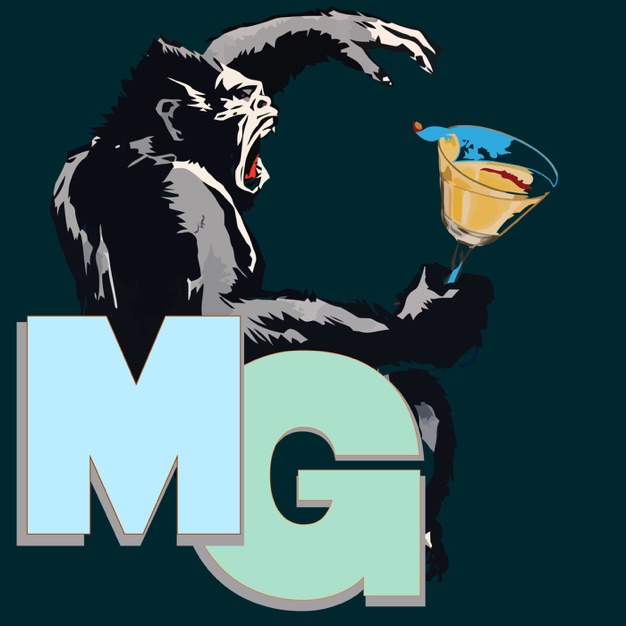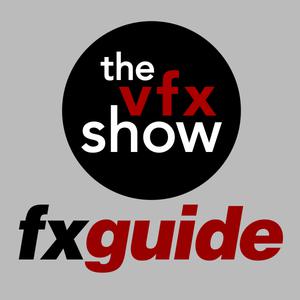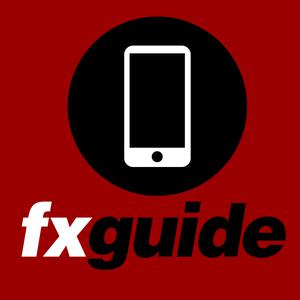
CG Garage
Chaos Labs
- 1 hour 16 minutesEpisode 496 - Jason Smith - Senior VFX Supervisor, The Lord of the Rings: The Rings of Power
Jason Smith, the senior visual effects supervisor on The Lord of the Rings: The Rings of Power, joins the podcast to discuss his award-winning career in visual effects. With nearly 25 years at Industrial Light & Magic (ILM), Jason’s achievements include an Oscar nomination and a Sci-Tech Award from the Academy for his groundbreaking work on Blockparty, a rigging tool used to bring countless creatures to life. He shares how his fascination with creatures and his dedication to mastering both the technical and artistic aspects of VFX have driven his remarkable career.
The conversation highlights Jason’s contributions to The Rings of Power, where he led the creation of photoreal creatures and solved unique challenges like scale and world-building. He also reflects on his work on iconic projects such as Transformers, Avengers, and Bumblebee, emphasizing the importance of blending practical and digital effects. Jason offers valuable insights into the evolving VFX industry, discussing collaboration, innovation, and the future of visual effects. This episode is a deep dive into the art and science of VFX from one of the industry’s most accomplished artists.
3 December 2024, 5:29 pm - 1 hour 15 minutesEpisode 495 - Jo Plaete - Chief Innovation Officer & VFX Supervisor at Metaphysic.ai
Jo Plaete, a pioneer in digital humans and chief innovation officer at Metaphysic, joins the podcast to discuss his company’s groundbreaking work on the newly released film Here, now in theaters. Jo traces his journey from his early career in computer graphics and visual effects, working on films like Where the Wild Things Are and Aladdin, to creating cutting-edge AI-driven tools that enable photorealistic de-aging of actors like Tom Hanks and Robin Wright. His experience includes collaborating with Disney Research on facial reconstruction technologies and pushing the boundaries of neural network-based visual effects.
Jo also explains how Metaphysic’s tools provided real-time feedback on set, allowing filmmakers to see younger versions of the actors instantly. This innovation enabled directors and actors to evaluate performances live, making adjustments on the spot to achieve the most authentic and emotionally resonant portrayal. Jo reflects on the future of digital humans in cinema, emphasizing how AI and real-time feedback are reshaping storytelling while maintaining a high level of artistic control.
12 November 2024, 5:18 pm - 1 hour 29 minutesEpisode 494 - Daniel Thron, Erick Schiele, and James Blevins — BTS Ray Tracing FTW
Daniel Thron, Erick Schiele, and James Blevins join Chris to discuss their work on the short film Ray Tracing FTW. Directed by Daniel, the film pushed the boundaries of virtual production, and Erick’s production design had to work both digitally and practically, ensuring consistency across virtual environments and physical sets. James, with his expertise in virtual production, shares how they overcame technical challenges using real-time ray tracing to handle complex scenes. Each of them wore many hats on the project—including cowboy hats—since they were all actors in the short as well.
The conversation explores how new tools like Project Arena allowed the team to streamline production, balancing innovation with practicality. They talk about how careful pre-production, from storyboarding to previewing assets, helped maintain visual fidelity while keeping the project within budget. By merging creativity with cutting-edge technology, Daniel, Erick, and James highlight how virtual production is reshaping filmmaking, particularly for projects requiring a blend of digital and physical workflows.
28 October 2024, 8:51 pm - 1 hour 13 minutesEpisode 493 - Jared Sandrew - Creative Executive & Visual Effects Supervisor
Jared Sandrew, a 3D supervisor at Disney and visual effects veteran, joins the podcast to discuss his career journey, from growing up around the pioneering technology of digital colorization to becoming a key figure in stereoscopic 3D conversion for blockbuster films. Jared shares fascinating stories about his time at Legend 3D, where he worked on major projects like Alice in Wonderland and Shrek, and how he helped build the stereo pipeline that revolutionized the industry. His passion for storytelling, visual effects, and the future of technology shines through as he reflects on how the field has evolved.
The conversation also touches on cutting-edge developments in AI and machine learning, which Jared has been exploring as a way to enhance visual effects and stereoscopic workflows. He explains how new tools are making the process more efficient and consistent, while still allowing for creative input from filmmakers. Jared and Chris also discuss the future of virtual production and real-time rendering, including the impact of LED walls and new ways to streamline content creation for films and beyond.
14 October 2024, 2:16 pm - 1 hour 18 minutesEpisode 492 - Debbie Kennard & Ron Eli Cohen - Line Producers for Ray Tracing FTW
Line producers Debbie Kennard and Ron Eli Cohen discuss their work on the short film Ray Tracing FTW and offer an insider’s perspective on the art of film production. Debbie shares her story, from her beginnings as John Carpenter’s PA on The Thing to becoming a trusted line producer in Hollywood, while Ron talks about transitioning from acting to producing, with credits like The Dark Knight Rises. Together, they break down the vital role of a line producer and provide insight into the world of budgeting, crew management, and creative problem-solving in the film industry.
The episode also dives into the technology behind Ray Tracing FTW, exploring how the team utilized virtual production techniques, including LED walls and complex set construction, to craft a visually striking film on a tight budget. Debbie and Ron emphasize the significance of meticulous prep work, strong crew collaboration, and maintaining a balance between creativity and practicality. Through their experiences, listeners gain a better understanding of how a line producer navigates the challenges of modern filmmaking while keeping the vision of the story front and center.
8 October 2024, 5:33 pm - 1 hour 15 minutesEpisode 491 - Richard Crudo & Esther Woodworth - Director of Photography & 1st Assistant Camera
In this episode, Richard Crudo, the cinematographer, and Esther Woodworth, the 1st Assistant Camera for the Ray Tracing FTW short film, share their journey working on the groundbreaking project. We take a deep dive into the dynamics of the camera crew, exploring how different departments like lighting and grip collaborate to bring a director’s vision to life. Esther provides insight into her passion for cameras, and the duo sheds light on their roles and teamwork on set.
Richard and Esther discuss their approach to shooting Ray Tracing FTW, detailing their experience working with LED volumes to seamlessly blend live-action with digital environments. They also talk about using the ARRI Alexa 35 paired with vintage Panavision lenses to create a classic 1970s film look while leveraging the flexibility and precision of modern technology. Throughout the conversation, they reflect on the balance of creativity and technical expertise and share their favorite moments from filming the short. This is a must-listen episode for anyone wanting to get a better idea of the right way to shoot ICVFX.
30 September 2024, 4:18 pm - 1 hour 14 minutesEpisode 490 - Matthias Christen - Head of CG Design, The Scope
Matthias Christen, the main 3D artist from The Scope on Ray Tracing FTW, shares his fascinating journey from traditional analog painting to becoming an expert in 3D and virtual production. Starting with a passion for drawing, Matthias entered the advertising industry, where he honed his skills in Photoshop and Illustrator before transitioning into 3D work. He talks about his growth at The Scope, where he’s been involved in creating cutting-edge car commercials and collaborating with top-tier photographers and filmmakers. Matthias also highlights the challenges and creative satisfaction of working on photorealistic environments that elevate product imagery.
In this episode, Matthias dives into his role in creating the massive virtual set for Ray Tracing FTW, a short film produced by Chaos and Martini Giant. He worked closely with production designer Erick Schiele to build one expansive set, containing nearly 2 trillion triangles, that was used seamlessly from pre-production to post-production. Running in real-time with Project Arena, this incredible asset allowed for consistent lighting and textures throughout the entire project, pushing the boundaries of real-time rendering. Matthias reflects on the technical achievements and creative process behind creating lifelike visuals that brought the world of Ray Tracing FTW to life.
23 September 2024, 4:14 pm - 1 hour 1 minuteEpisode 489 - A.J. Wedding - Co-founder and Chief Creative Officer, Orbital Virtual Studios
In this episode, Chris sits down with AJ Wedding, founder of Orbital Studios, to discuss how the Chaos Innovation Lab used his studio to film Ray Tracing FTW using Project Arena. AJ shares how his early fascination with virtual production, inspired by his work on The Mandalorian, led him to launch Orbital Studios during the pandemic. He explains the challenges of building a virtual production studio from scratch, perfecting LED panel technology, and saving productions like Snowfall significant time and money.
AJ also explores the advancements in virtual production, discussing AI tools and their impact on giving filmmakers real-time creative control. He highlights the importance of educating producers and DPs on how to maximize this technology’s potential. AJ’s insights show how virtual production is transforming the film industry, making it more accessible to filmmakers of all levels.
16 September 2024, 4:02 pm - 1 hour 3 minutesEpisode 488 - Ed Ulbrich - Chief Content Officer & President of Production, Metaphysic.ai
It’s been seven years since Ed Ulbrich last appeared on the CG Garage podcast — and a lot has changed. The man who digitally aged Brad Pitt for The Curious Case of Benjamin Button and resurrected late rapper 2Pac as an on-stage hologram is now chief content officer and president of production at metaphysic.ai, which is using AI tools to create photorealistic digital humans in real time for movies such as Robert Zemeckis’ Here.
Ed breaks down what Metaphysic.ai does, and how it can be used by directors to see live digital doubles while slashing production times and costs. In turn, Ed envisions AI tools turning Hollywood on its head and enabling filmmakers to be more creative on lower budgets. He also highlights some of the challenges of enticing new audiences into theaters and shares what he’s working on next.
9 September 2024, 4:03 pm - 1 hour 9 minutesEpisode 487 - Kevin Tod Haug - VFX Supervisor
Kevin Tod Haug has always been destined for a career in VFX. From a young age, he analyzed movies and TV series to work out how they were made. He joined the industry and saw it transform from electro-mechanical to digital via movies and TV series, including Tron and Star Trek: The Next Generation. He then became a full VFX supervisor on movies including Fight Club, The Cell, Panic Room, and Quantum of Solace, and pioneered creative VFX shots that allowed cameras to move through tiny spaces or make the unbelievable look real.
As the industry shifts once more with AI and virtual production, Kevin talks about his career and how he’s managed to catch successive waves of VFX technology from the 1970s to today, sharing how he used new technology to create convincing effects for low-budget Italian war movie Comandante. He shares amusing anecdotes from his career in VFX, from a literal fly in the ointment to an encounter with Prince, and he gives advice on how to stay ahead of the curve.
3 September 2024, 3:52 pm - 1 hour 11 minutesEpisode 486 - Ian Dawson - Founder & Executive Producer, IDGRAFX
Ian Dawson’s dream of a Jarvis-style computing interface seems to be coming true. This multi-talented CG veteran began his career in graphic design, before moving into producing and creating flying logos throughout the 90s. He then moved into advertising, and title sequences and VFX sequences for movies including the Iron Man trilogy, Star Wars: Rogue One, and Mission Impossible: Ghost Protocol, picking up work in AR and VR along the way.
Ian talks through his career and the technology that has helped define it, from the obscenely expensive days of Quantel’s PaintBox and Harry systems, to today’s cheap and accessible VFX software and systems. He gives an interesting update on the state of AR and VR systems, which are undergoing a mini-resurgence thanks to Apple’s Vision Pro and Microsoft’s AI integration in its AR systems. Ian also shares advice about the industry, including the pros and cons of profit sharing.
26 August 2024, 3:30 pm - More Episodes? Get the App
Your feedback is valuable to us. Should you encounter any bugs, glitches, lack of functionality or other problems, please email us on [email protected] or join Moon.FM Telegram Group where you can talk directly to the dev team who are happy to answer any queries.
 Martini Giant
Martini Giant
 fxguide: the vfx show
fxguide: the vfx show
 Tetragrammaton with Rick Rubin
Tetragrammaton with Rick Rubin
 fxguide: fxpodcast
fxguide: fxpodcast
 The Allan McKay Podcast
The Allan McKay Podcast